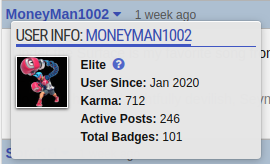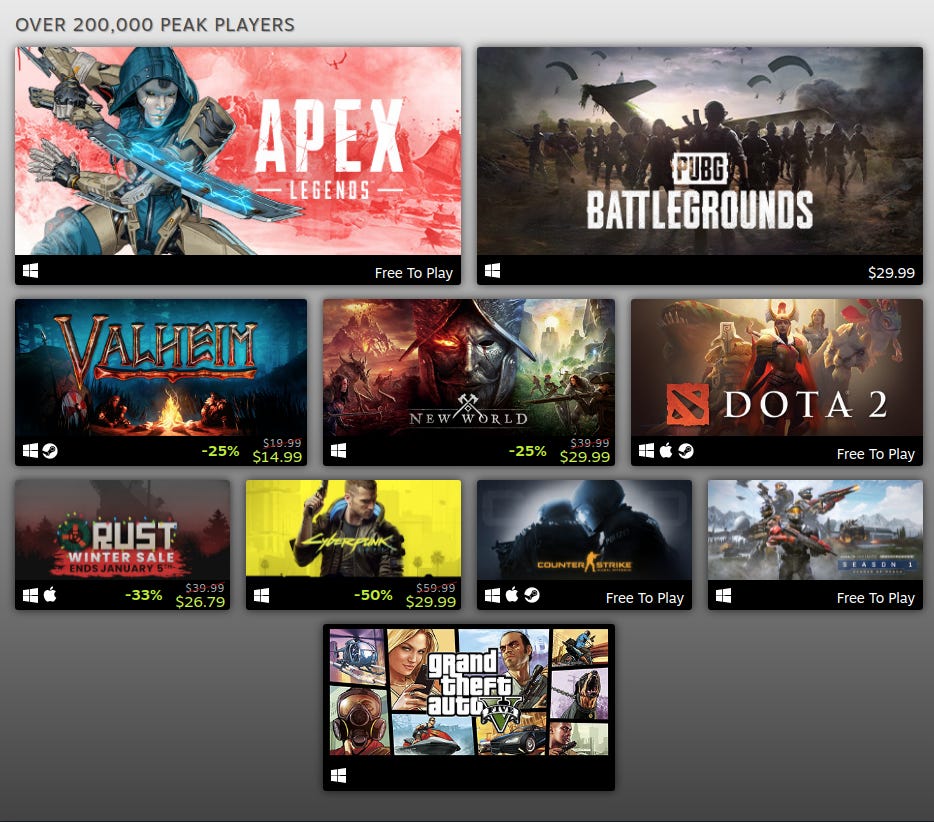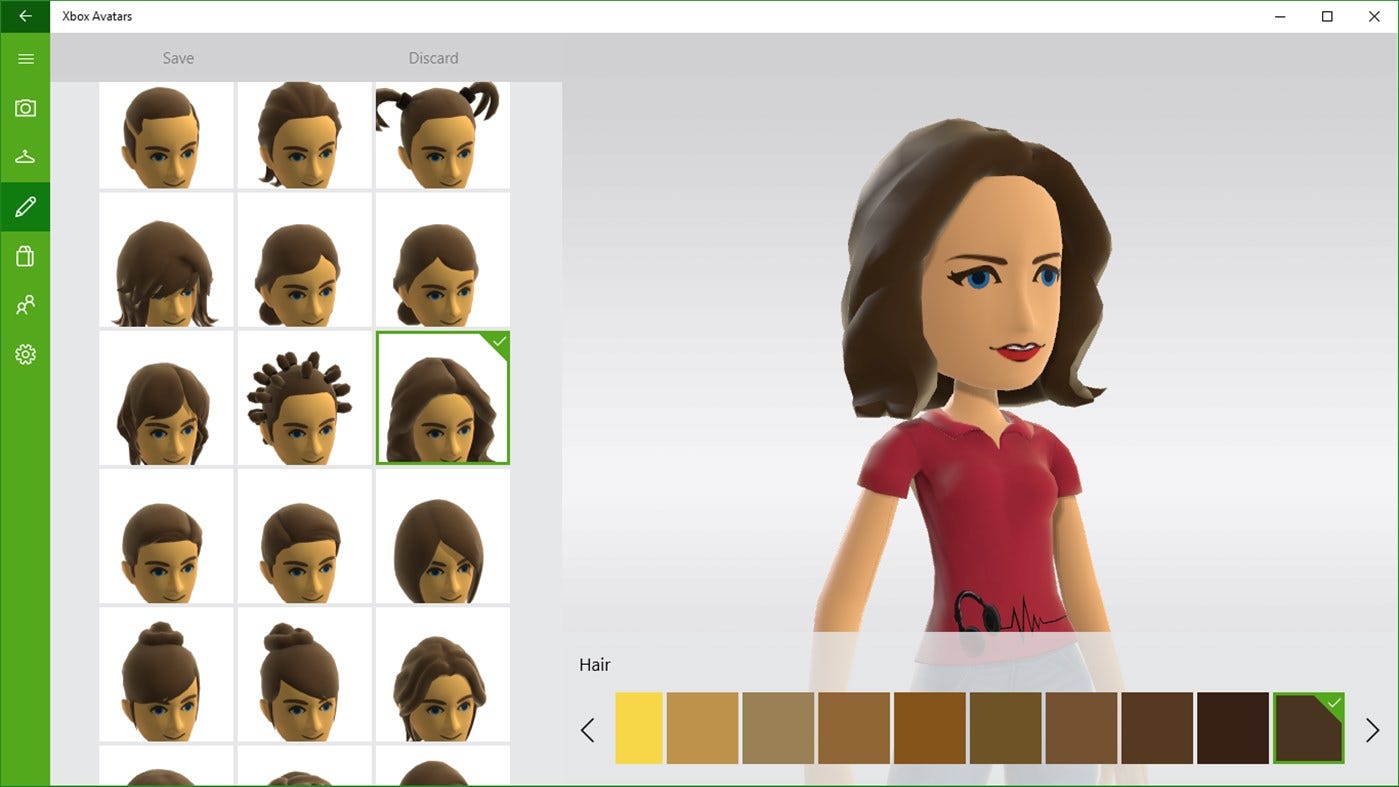Stop calling them pfp NFTs. Call them Avatars.
This is important.

Avatars are coming.
NFTs enable programmable ownership of Avatars, leading to rapid experimentation. Lifelike Avatars enabled by advances in Virtual Reality, Augmented Reality, Haptics, and AI will soon create stimulating experiences that provoke deep emotional connections in us.
Wide interoperability across work, gaming, and interpersonal life will lead Avatars to be seen as a fundamental primitive in the digital world.
Just like you have an E-mail and social media accounts today, you will have and own Avatars in the future. Apps and websites will connect to your Avatar much like they connect to your social media or E-mail today. Your Avatar isn’t an E-mail or a social media account, although it might have both of those things. It is a self-contained, independent entity with self-descriptive data and tokenized value. It can work, it can play, it can program, and it isn’t bound to the messy constraints of reality.
The popularity and high value of Avatars will lead to a large economy around them. Avatars won’t be limited to isolated video games or profile pictures. Internet and mobile apps will upgrade to support Avatars. New platforms will be built around experiences made possible by Avatars. They will integrate seamlessly into the metaverse.
The Avatar market will be large, liquid, and valuable. Prices will reflect culture, politics, and technology. Most Avatars will be free, while some Avatars will be worth billions of dollars. Valuable Avatars will generate yield and own productive enterprises in the metaverse themselves.
Everyone will want Avatars.
Social Media
Every social media platform offers a unique feature set, but they all support the 2D Avatar: a profile picture.
It’s one of the only features—aside from harvesting your personal data—that every social media platform supports natively.
Internet forums and instant messaging nearly always support profile pictures. Humans like pictures. They like colors. They like faces. They like patterns. Even a minimalist, old-school forum like GameFAQs supports profile pics.
The counterexamples which don’t support Avatars today tend to be text-only or maximize for anonymity.
Gaming
Avatars are so popular in video games that people don’t even think about how profile pictures are also Avatars.
In video games, an Avatar invokes a sense of responsibility in the player. People form deep emotional connections with Avatars. Millions of people can share a sense of attachment or responsibility to the same Avatars.
Albeit virtual and intangible, there is something deeply human about Avatars. They are a purposeful representation of what makes us human.
Avatar creators focus on the personification. They focus on the expressions, the facial structure, the skin tones, and the animation. They build customization tools so players can control how their Avatars look and feel.
That emotional connection is what drives gaming popularity. The most popular genres in gaming are Avatar games. Shooters, RPGs, and MOBAs dominate gaming today.
In 2021, all of the most played games on Steam were 3D Avatar games which simulate real-world physics. All the Avatars are humanoid and 9/10 are multiplayer. They have progression mechanics and equipment.
Naturally, Avatars carry social status. Games reward players with items which affect the appearance and play of their Avatars. The grinding progression of an MMORPG is made possible by humans really liking Avatars. There’s a lot of satisfaction from leveling up and gearing an Avatar.
A high-level World of Warcraft account is worth more than a new account. A lot more. It takes years of work and skill to rank up a World of Warcraft account. A high-level account has more gear, can participate in more gameplay, does more damage, and is generally more fun to play for most people.
Your Avatar tells a story, and life is about storytelling.
Virtual Economy
In the last decade, the gaming industry has leveraged increased Internet connectivity to experiment with their business model. The most popular games are multiplayer. To create network effects, gaming companies have offered their games free-to-play, subsidizing revenue by selling virtual items in in-game marketplaces.
By far the most popular items in these virtual economies are Avatars and Avatar accessories.
Fornite sells “skins”, which are Avatars. Fornite generated $5.4B in revenue in 2020, with most of that driven by skin sales.
They look good. They are cool. They are fun to play as. People want them.
Both social media and video games drive adoption through Avatars.
NFTs
The preeminent story in crypto of 2021 was NFTs because the crypto community figured out you could put Avatars on the blockchain. Larva Labs and their collectors figured this out in 2017-2020, but the bulk of us learned in 2021.
Over $2.4B was spent on CryptoPunks in the last year.
There were a few waves in the NFT market throughout 2021, but the repeating pattern was the compounding popularity of so-called “pfp” (profile picture) NFTs.
This is what I want to focus on.
OpenSea calls these projects “Collectibles”, but that is overly broad and abstract. While technically correct, it does nothing to paint a vision for the asset class or its projects and instead frames “pfp” NFTs as an esoteric interest of collectors. This reductionist characterization of these projects will not age well.
“pfp”
Do we capitalize it? Can we even agree how to say it? I don’t think so.
Stop calling them pfps. Call them Avatars.
That’s what we want them to be. That’s what projects should strive to build. That’s what the market will reward.
Describing an NFT project as a profile picture project is unimaginative. It compounds the terminology vomit: pfp NFT. That is unspeakable. Don’t say it.
Avatars
When I look at these successful NFT projects, I see Avatars.
Avatar is a much better term than NFT or pfp, and exponentially better than both of them used together.
An Avatar NFT has all the benefits of a blockchain: ownership, immutability, open source, composability, etc. It can be transferred between accounts or sold, allowing consumers to reclaim value or profit from resale. The data is open source, so any application can build on top of it, not just the company that sold you the Avatar. The assets can trade on existing NFT marketplaces by conforming to standards.
These are additive features compared to today’s experience buying an Avatar or accessory in a video game where the resale value for consumers is always $0, the data is private, and there’s generally no way to integrate the Avatar into other games or software.
An Avatar NFT is open source, immutable, transferrable, and retains value after purchase.
Of course, blockchain-based Avatars carry with them all the downsides of blockchain technology today: immaturity of design and best practices, computational and storage expense, immutability, lower adoption, confusing and over-assuming UX, etc. To build and model an Avatar on a blockchain adds new and complex steps compared with creating a new skin in a video game. Immutability is a constraint, and the economic value underpinning NFTs punishes mistakes.
Modeling complexity with Avatar NFTs
We are starting with NFTs that are just a few bytes of information on-chain. For most Avatar NFTs, the picture is not stored on Ethereum. Instead, the NFT contract encodes metadata which includes a URI to retrieve the picture, usually hosted on IPFS. A web3 service can read the metadata from Ethereum, decode the URI, then fetch the picture. The simplicity makes integration a simple task for web3 apps.
A natural evolution from 2D Avatar profile pictures that many projects are pursuing is to provide 3D asset files for the Avatars.
Larva Labs, in typical fashion, are ahead of the curve with Meebits. While the Ethereum blockchain itself only stores a larvalabs.com hyperlink to a JSON file with a JPEG and metadata for each Meebit, the Larva Labs website allows owners to download 3D files and lossless images for their Meebit. This enables creators to build on top of the Meebit Avatar and use them in other games and media.
Many will overanalyze the level of centralization about how the asset files are hosted and retrieved, but they are missing the point. The decentralized and open source building blocks will come together as more projects lead, experiment, and develop best practices. Many projects are experimenting with the best patterns for storing large files on IPFS, Arweave, etc. and then linking to them via the immutable metadata on the blockchain.
The token proving ownership is the most important property to decentralize.
Avatar state and upgrades
There are a lot of tradeoffs between upgradability and immutability, and it requires social consensus on how to put the pieces together well. The methods to encode a stateful, upgradable 3D Avatar on an immutable blockchain is a largely unsolved problem that will develop over the next several years.
A proof of concept can be built quickly. Social consensus on the best design patterns take more time. Widespread adoption takes years.
Existing projects can upgrade to newer designs as they are discovered and popularized. Even CryptoPunks moved to a V2 contract after an exploit was discovered. Any project or community can upgrade any existing project using social consensus.
Projects that exist today will continue to evolve and become famous Avatars in the future. Perceived immutability will not be a limitation.
Big Tech Avatars
Most of Big Tech has figured out that Avatars are important and have at least some Avatar product available.
Meta has a Avatar SDK for Unity developers with Unreal Engine support launching in 2022. This may prove to be one of the most important API standards of the decade. No one should underestimate Meta. They have twice as many users as the most populous country on Earth. Whatever they build will be used by billions of people.
Apple created Memojis which allow customization of features like skin, hairstyle, head shape, and more. They look pretty good.
Microsoft has been iterating on Xbox Avatars since 2008. The Xbox brand is strong and they are well prepared for Avatars from a technology and product standpoint. They own more than a dozen independent gaming studios.
Amazon has limited experience creating Avatars via their recent game, New World. VTubers on Twitch are better Avatars, and Amazon would be smart to invest in them. They probably won’t.
Google hasn’t debuted anything comparable to the Avatar products above. I wouldn’t be surprised if Tesla beats them to it.
Meta is the standout, but Apple and Microsoft are well positioned as well. Google seems unlikely to execute well, while Amazon’s pathway into the metaverse is probably through VTuber tools on Twitch. Tesla will do something surprising.
Interoperability
Today, Avatars are lonely. They exist only in isolated contexts. They are largely subject to the terms and conditions of their creator. They cannot be moved from one virtual world to another. Your World of Warcraft character will never meet your Fortnite character or your League of Legends character.
3D technology and animation is key intellectual property for companies and not well commoditized. Without a strong forcing function for open, interoperable standards, there is little reason for companies to explore meaningful composability.
It is cheaper and easier to sign a deal with Microsoft to sell a skin of Master Chief in Fortnite than it is for the companies to link their databases so you can use your actual Halo Spartan in the Fortnite game engine. Halo fans would riot if the reverse was offered, so that’s out of the question.
As we build out the metaverse, people will demand Avatars that are portable. They will want to use the same Avatar on social media, in video games, at work, and while producing media content. Building on top of Avatar standards needs to be made simple and intuitive.
Your Avatar is you, or a version of you, or someone, or something you’re representing in a virtual experience. It has history, skills, knowledge, and progression. These properties are contextually relevant in different worlds in the metaverse. Games will offer the opportunity for your cooking or crafting skill to travel between games, or you may choose to integrate only a portion of your skills or Avatar property.
You will likely want an Avatar for work, another for hanging with friends, ones for gaming, social media identities, and many more. Lines will blur. Your Avatar might have an E-mail account or its own self-contained social media.
You’ll feel cheated by artificial restrictions. If your gaming Avatar has a cool outfit that you unlocked or bought, you should be able to wear it on your favorite work Avatar for video calls.
If you think it sounds dumb, I promise your kids don’t.
Open Standards
There’s no formal definition for open standards and we can’t point to some objective and say we’ve achieved interoperability through open standards once its achieved. Rather, open standards for Avatars will look more like a set of design properties and a convergence of digital representations and file types.
Technological breakthroughs happen when multiple requisite technologies come together at once to enable new products. We are on the cusp of a technological breakthrough in Avatar technology that will have a profound effect on society. 3D gestures and virtual realities will convey information much faster than preceding peer-to-peer communication technologies.
web2 dystopia
Social media has normalized 2D avatars and revolutionized the way we interact. But technology limitations and market effects have pushed us into somewhat lifeless Internet bubbles which often feel rather dystopian. In many cases, good technology has been replaced by worse technology in the name of risk-averse profit maximalization.

Accounts and data on web2 are completely non-interoperable. Whereas web1 was defined by open standards like E-mail and HTML, web2 is an oligarchy of information silos. Twitter was once a protocol until it rugged all of its third-party developers in the pursuit of profit. You can’t leverage your Twitter social graph on Facebook or Instagram or TikTok.
RSS was neutered by Big Tech. E-mail is clunky and out of favor, but because its an open standard, it’s more popular and better integrated into society than any social media account. Important industries like Medicine and Law are reluctant to rely on web2 accounts despite happily integrating web1 protocols like websites or E-mails.
Your doctor will not send you a Facebook message, but they will send you an E-mail with an HTML link.
This is not the way.
There is little technological reason for this. We all build on the same operating system and networking standards, but we can’t agree on a social post protocol for the social Internet because it’s too profitable to privatize them. Without interoperability, it is impossible to pierce the network effects of private platforms.
web3 fixes this.
web3 open standards
web3 enables open source, verifiable ownership of digital assets. This revolutionizes Internet economics, enabling new businesses and products.
When you own an Avatar NFT, everyone can verify that you own it. All metadata and data links are public and open source. Any software that integrates with a blockchain can verify ownership of an Avatar using public, open source, immutable APIs. Once the integration is implemented, it will generally have 100% uptime and work forever due to the immutable guarantees provided by the cryptoeconomic incentives of blockchains.
The value created by these properties are strong market forces and explains why blockchain data can be considered the most valuable data in the world per byte. People want data which is open source, verifiable, and always available. They do not want to be at the whims of Big Tech.
web3 bytes are worth more than web2 bytes.
Early Limitations
Today, it’s fair to say that most implementations of Avatars (“pfp” NFTs) make purists cringe. Project metadata often links to privately-hosted data rather than blockchain data. Projects mutate data in IPFS, and usage of Arweave is an outlier. Even Meebits which we highlighted earlier requires a human to visit to a website to fetch the 3D files.
Market forces for open source
Due to network effects, open source, interoperable Avatars will be the most widespread and the most valuable. Open source allows for greater free market participation, more ideas, and faster development cycles.
Tokenization gives market participants efficient methods to vote with their money. Many in the crypto community were shocked by the explosive popularity of Avatar NFTs this year.
If you look through the noise, there’s a lot of evidence that these open source market forces are already playing out in Avatars.
Licensing
Bored Ape Yacht Club has flipped CryptoPunks floor price and there is little doubt a significant contributor to that is the more permissive licensing of BAYC.
Creative Commons projects like CryptoToadz are building their own marketplaces to escape the OpenSea tax. This community-led value creation is only possible under permissive licensing by creators, and the market is rewarding creators who recognize this. In Discord, NFT owners are pushing for permissive licensing, open source data, and imaginative 3D metaverse integrations.
Successful Avatars
We have seen hundreds of copycat “pfp” projects and this trend will continue even as Avatars upgrade into more lifelike and stateful 3D entities that live and work in the metaverse. At a market level, this is one of the benefits of blockchain and open source. Rapid iteration of ideas with market structures for capital to vote and promote the best ideas. It’s exciting, and cool ideas are being built fast with the rewards reaching creators almost immediately.
The flipside, of course, is that competition is brutal and the market isn’t always fair. But if you pay attention, there are common themes to successful projects that can be predicted in advance. The game Civilization has different victory conditions, which is a useful trope to frame the NFT projects building Avatars.
Science Victory
The first and easiest to identify is being first to market with a meaningful technology or feature. Larva Labs created CryptoPunks which was the first Avatar-like NFT.
Another example rewarded by the market is CyberKongz. Staking to earn a BANANA token is an early example of Avatars being independent agents in the metaverse which work and earn property for us. Owning an Avatar that makes money for you is really cool. People want that. The market liked that idea.
Technology winners will continue to outperform. People like technology. Being first to market with new technology delivers value to owners. It takes time for the market to distill and copy innovative ideas.
Revolutionary ideas receive historical premiums as well.
Culture Victory
The other main pathway to success we’ve seen is through pop culture. The obvious winner here is Bored Ape Yacht Club, the premier project in the entire NFT and Avatar space.
Other projects like Cool Cats and Doodles deserve mention as well. People like the look and feel of these Avatars and want to own one. They like being a part of the communities and events, and receiving rewards for being token holders.
Cultural winners are recognizable by their virality and memes. Projects that resonate culturally will be valuable. By raising capital, they can build innovative technology for their Avatars.
The next wave of celebrities are Avatars.
Avatars
Avatars are a social technology that will shape our future. I’m optimistic that we have the technology needed to make amazing Avatars in the coming years. Avatars were created to give people a way to represent a character or themselves in a digital world. Empowering people to own their Avatars with NFTs will proliferate open source standards and compound value creation in the metaverse.
I’m excited about Avatars, and I hope you enjoyed reading about them.
If you want to talk about them or build them, feel free to reach out to me on Twitter.
I am building @OpenAvatarNFT.



















